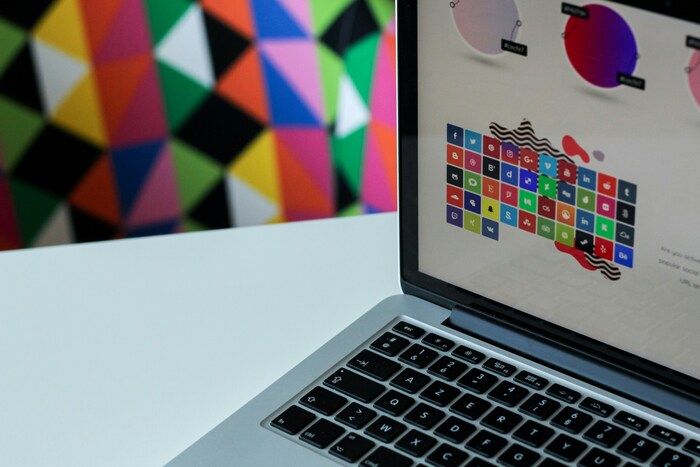Introduction
Graphic design is a dynamic and creative career that combines artistry with technology. This field is critical in many industries, including advertising, marketing, web development, animation, and publishing. Graphic designers are tasked with creating visual concepts that communicate ideas, inspire, and captivate audiences. This post will discuss the benefits of pursuing a career in graphic design, outline the diverse job opportunities available, and provide insights into the various educational paths aspiring designers can take to succeed in this industry.
Benefits of Pursuing a Career in Graphic Design
One significant benefit is the creative fulfillment that comes with the job. Graphic designers often turn abstract ideas into tangible visuals. This transformative process provides immense satisfaction. Designers are free to express their unique artistic vision, and creativity becomes a part of their daily routine.
Graphic design skills are in high demand across various industries . Companies need graphic designers to communicate their brand’s message. This demand means graphic designers have a high level of job security and numerous opportunities to explore. Flexibility and variety are other attractive aspects of this career. Graphic designers can work in diverse environments. Options range from corporate settings to freelance projects. Each project offers a unique challenge, and this variety keeps the work engaging and exciting.
Competitive salaries are a huge plus for aspiring graphic designers. Skilled designers often earn a lucrative income with a median pay of $58,910 per year in 2023. Salaries can increase with experience and expertise. This potential for high earnings adds to the career’s appeal.

Job Opportunities in Graphic Design
Graphic Designer
Graphic designers are the backbone of visual communication, crafting visual content to convey messages effectively. Their responsibilities include creating layouts for advertisements, brochures, magazines, and corporate reports. They work closely with clients to establish requirements and use various design software to develop visual concepts. Graphic designers need a keen eye for detail, color, and composition. Their work is crucial in ensuring brand consistency and setting a visual tone that engages and informs the target audience.
Web Designer
Web designers specialize in designing and creating websites, balancing aesthetic appeal with functionality. They are responsible for a website’s layout, visual appearance, and usability. This responsibility involves selecting colors, fonts, and images and structuring content to ensure an intuitive user experience. Web designers must understand graphic design principles and the technical aspects of front-end development, making them pivotal in creating engaging and efficient online platforms.
UX/UI Designer
User Experience (UX) and User Interface (UI) designers focus on creating intuitive, user-friendly interfaces for digital products such as websites and mobile apps. UX designers conduct user research, develop user personas, and map out user flows to ensure the product meets the user’s needs. UI designers then bring these plans to life with visual designs, focusing on style, colors, and interactive elements. Together, UX/UI designers ensure a product is usable and enjoyable, making their roles essential in the digital age.
Advertising and Marketing Designer
Advertising and marketing designers create compelling visuals for marketing campaigns across various media platforms, including print, digital, and social media. Their primary responsibility is to develop eye-catching ads that effectively communicate promotional messages to the target audience. These designers work closely with marketing teams to ensure alignment with branding strategies and campaign goals. Their work is crucial in grabbing attention in a crowded marketplace, driving engagement, and influencing consumer behavior.
Brand Identity Designer
Brand identity designers focus on creating a cohesive visual identity for brands. They develop logos, color schemes, typography, and style guidelines representing the brand’s personality and values. Their role involves extensive research into the company’s goals and target audience, ensuring the brand stands out and resonates with consumers. By crafting a strong visual identity, these designers help build brand recognition and loyalty, making them invaluable to any company looking to establish or refresh its image.
Freelance Designer
Freelance designers operate independently, offering their design services on a project-by-project basis to various clients. Their versatility allows them to work across multiple design disciplines, from graphic and web design to illustration and motion graphics. Freelancers must manage all aspects of their business, including client acquisition, project management, and financials. This career path offers tremendous flexibility and the opportunity to work on diverse projects but also requires strong self-discipline and business acumen.
Illustrator
Illustrators create original artwork for various applications, including books, magazines, advertisements, and digital media. They use drawing, painting, or digital tools to produce illustrations that convey messages, tell stories, or evoke emotions. Illustrators often collaborate with authors, marketing teams, and designers to integrate artwork into larger projects. Their unique ability to bring concepts to life visually makes them an important asset in creative and commercial projects.
Motion Graphics Designer
Motion graphics designers specialize in creating animated visual content for various media, including television, film, and digital platforms. They use animation software to produce engaging and dynamic graphics that capture the viewer’s attention. Responsibilities include designing title sequences, explainer videos, and promotional content. Motion graphics designers play a crucial role in enhancing storytelling and visual communication, making their contributions vital to the entertainment and advertising industries.

College Degrees and Certifications for Aspiring Graphic Designers
Bachelor’s Degree in Graphic Design
A bachelor’s degree in graphic design is a comprehensive program that typically spans four years and covers a wide range of topics essential for a career in graphic design. Students learn the principles of design, typography, color theory, and digital imaging, among other subjects. They also gain proficiency in industry-standard software and tools, preparing them for various design roles. This degree often includes hands-on projects, critiques, and a final portfolio, providing graduates with a solid foundation and a competitive edge in the job market.
Associate Degree in Graphic Design
An associate degree in graphic design typically requires two years of study and focuses on the essential skills needed for the field. Courses often include graphic design principles, web design, software applications, and digital illustration. This degree is ideal for those looking to enter the workforce quickly, as it offers practical skills and knowledge that can be immediately applied in entry-level positions. Many associate degree programs also offer internship opportunities to gain real-world experience.
Bachelor’s Degree in Fine Arts with a Concentration in Graphic Design
A fine arts bachelor’s degree with a graphic design concentration combines traditional art education with modern design techniques. This four-year program allows students to develop their artistic skills while focusing on graphic design applications. Coursework typically includes painting, drawing, sculpture, graphic design principles, typography, and digital media. Graduates leave with a broader understanding of art and design, often contributing to a more versatile and creative approach to their work.
Certificate Programs, such as Adobe Certified Expert
Certificate programs, such as becoming an Adobe Certified Expert (ACE), offer focused training on specific tools and software widely used in the graphic design industry. These programs are usually shorter and can range from a few weeks to a few months. They are ideal for professionals looking to enhance their skills or stay current with the latest software updates. Being certified as an Adobe Expert demonstrates a high level of proficiency in Adobe products, such as Photoshop, Illustrator, and InDesign, which can significantly boost a designer’s credentials and job prospects.
Internships and Practical Experiences
Internships and practical experiences are invaluable for aspiring graphic designers, providing a bridge between academic learning and professional practice. Internships offer hands-on experience, allowing students to work on real projects, collaborate with experienced designers, and understand workplace dynamics. These experiences sharpen technical skills and enhance soft skills such as communication, teamwork, and problem-solving. Internships often result in a professional portfolio that showcases a student’s best work, which is crucial when seeking employment in the competitive field of graphic design.
Conclusion
In summary, a graphic design career offers many benefits, from the creative satisfaction of crafting visual masterpieces to the dynamic job opportunities available in diverse industries. Aspiring graphic designers can explore roles such as brand designer, freelance designer, illustrator, and motion graphics designer, each with unique challenges and rewards. Multiple educational paths suit different needs, including bachelor’s degrees, associate degrees, and certificate programs like the Adobe Certified Expert. Internships and practical experiences further enhance a designer’s skills and employability. For students passionate about merging creativity with technology, graphic design is a fulfilling and ever-evolving field. Embrace your artistic talents and embark on an exciting journey where your imagination is your limit.















